Everyone makes mistakes, but when it comes to annual and routine aircraft inspection, mistakes can cost time, money, and risk people’s safety. In this article, we’re going to focus on common mistakes we see people make in routine aircraft inspection, as well as provide solutions on how aircraft owners can avoid these mistakes and stay ahead of common maintenance issues.
What Routine Aircraft Inspection are Required for Your Aircraft?
The FAA requires annual inspections every 12 calendar months for nearly all aircraft. Unless you are following an approved progressive inspection plan, carry a special flight permit, current experimental certificate, or provisional airworthiness certificate; you are not exempt from this requirement.
What is the 100-Hour Inspection?
The 100-hour inspection is required for nearly all aircraft. So, what is it?
It’s pretty much what it sounds like. After every 100 hours of flight time, the aircraft must undergo a scheduled inspection. During the 100-hour inspection, mechanics look for things like performance issues, flight surface smoothness in rudder pedals, brakes, and flaps, and the engine is run, and a magneto check is performed. The mechanic will also make sure the lights are operating properly, and more.
Common Mistakes Aircraft Owners Make During Routine Aircraft Inspections
It can be easy to get so focused on getting your plane back in the air that you overlook things that are seemingly “minor issues.” But how do major issues start? When minor issues go unaddressed for long periods of time. Here are some common mistakes we see aircraft owners make when it comes to routine inspections.
Not Identifying Corrosion Early
Identify corrosion early so you can save money. Especially on your landing gear and actuator. There are several different types of corrosion typically found on aircraft, including uniform surface attack, intergranular corrosion, stress corrosion, crevice or deposit corrosion, and filiform corrosion.
Look for grayish-white powder on aluminum and reddish deposits on ferrous metals. Look for bumps or blisters in paint, which can mean there is corrosion happening under the surface. Additionally, pay close attention to the trailing edges of control surfaces where skins come together.
Not Fixing Leaking Hydraulic Fluid Quickly
Leaks, no matter how small, don’t get better. If you have a leak in your hydraulic reservoir, it can cause flight issues and safety concerns. Not only that, but it will drain your reservoir and cause your systems to go bad.
Not Identifying the Cause of a Rough Running Engine
If you have a rough running engine, it can indicate a magneto malfunction. Whether it’s excessive RPM drop, no RPM drop, or just general wear and tear, it’s important to keep up to date on magneto maintenance.
Insider Tip:
AAI conducts 500-hour inspections on aircraft magneto brands like Slick and Bendix. The FAA doesn’t require this inspection, but it’s good practice to ensure safe and reliable operation of your aircraft engine.
Ignoring Loose Hardware
Loose hardware can be a serious safety concern on an aircraft. Ensuring that your aircraft’s nuts and bolts remain securely fastened contributes to the overall safety and efficiency of your aircraft.
How AAI Can Help You Avoid these Mistakes
At AAI, we know you want certified parts for your aircraft. Cutting corners or sacrificing quality is not an option. You are responsible for the safety of everyone who boards your aircraft. When you work with us, you work with a company that is certified and trustworthy. We
We don’t focus on “market” price. Instead, we know the margins we need to operate, which allows us to price transparently and pass saving to the customer. Additionally, we prioritize having a rapid response with customers, so they don’t have to wait any longer than needed to get answers. When you call us, you’ll talk to a real person, never a robot.
Detailed, thorough, and expert work is required to get the job done the right way. At AAI, we know your ultimate goal is to get your plane fixed so you can fly. That’s why we go above and beyond to help you avoid extra costs by creating repairs and manufacturing the parts on your aircraft that are prone to corrosion and wear, like landing gear components.
Aircraft maintenance and overhaul requires quick turnaround times. You don’t want a hangar full of planes propped up on jacks, creating a traffic jam for everyone trying to maneuver around them. AAI completes inspections and repairs in-house so that parts get turned around quickly, and you can return your aircraft to normal operation.
Do you have questions about AAI’s process or available parts? Contact us for more information and be sure to sign up for our Frequent Flyers Email Newsletter to get our articles, updates about industry events, and links to our favorite online content delivered right to your inbox every month.
